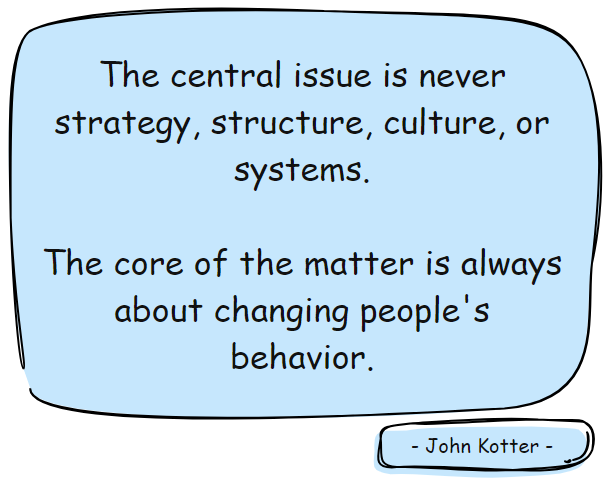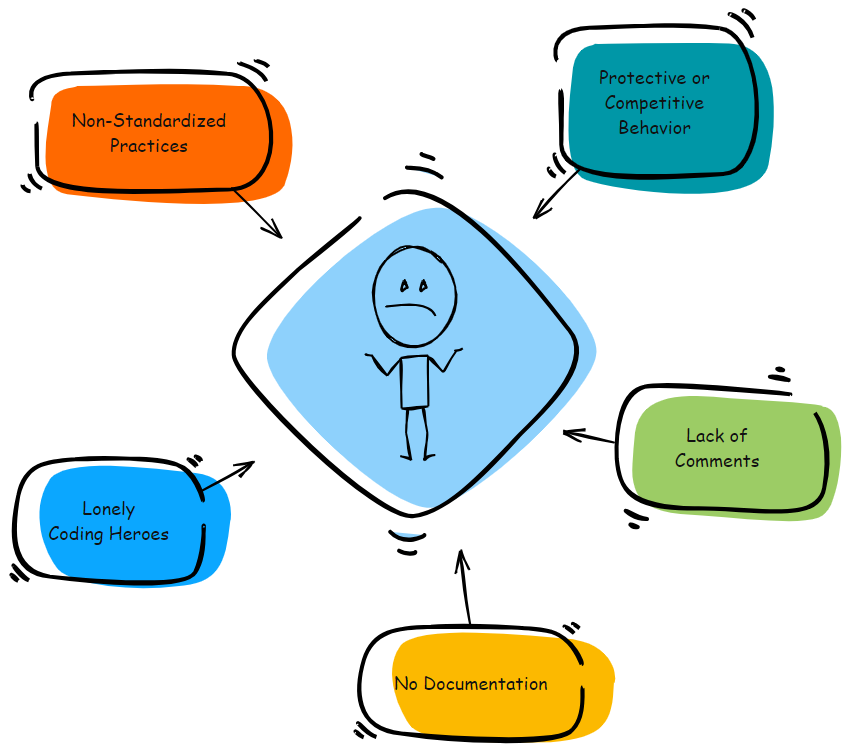Early in my career as a quality manager, I was part of a team tasked with overhauling a software company’s quality assurance processes. We crafted a robust strategy, implemented cutting-edge systems, and restructured departments for optimal efficiency.
On paper, everything was flawless. Yet, months later, quality issues persisted. Curious about the disconnect, I walked the floor, asked questions, talked to people, listened, and noticed that employees were still clinging to their old methods and were resistant to the new processes we introduced.

This experience taught me a crucial lesson: even the best strategies and systems fail if they don’t consider the human element.
As John Kotter wisely said, “The central issue is never strategy, structure, culture, or systems. The core of the matter is always about changing people’s behavior.”
Real transformation happens when we focus on helping individuals understand, embrace, and commit to new ways of working.
This reminds us that at the heart of every organizational change are people whose behaviors determine success or failure.
Hence, please don’t underestimate the power of change management – or the danger of not considering it.


